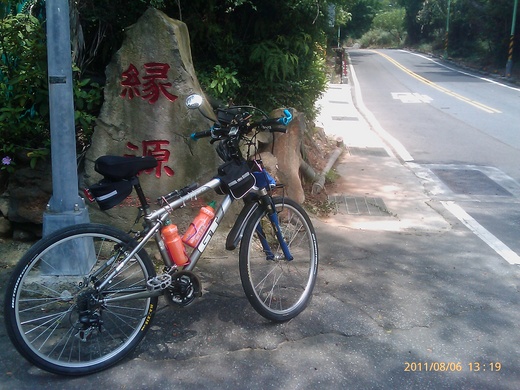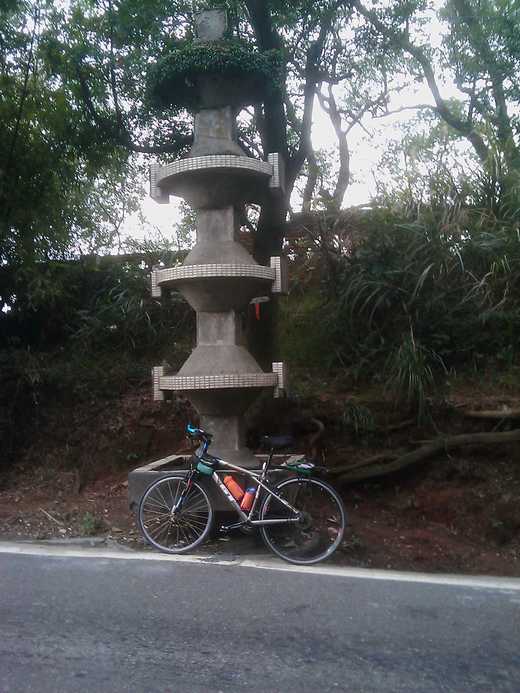Bike tires hum on snow, and they buzz on ice. But they rarely slip
when you’re going straight. Gears click and shift the same in almost any
weather. Just remember the lube. And the cold wind? With the right
clothing it’s not an issue, according to regular wintertime riders.
Untold thousands of people in the U.S. pedal year-round to work or
school, commuting on city streets and plowed trails. New cycling
equipment, better apparel and a growing awareness of the feasibility of
wintertime riding has caused a jump in participation.
“I used to count bikes as I rode in the winter, as they were so rare,”
said Dave Olson, a 57-year-old electrical repairman from Minneapolis who
has commuted year ‘round through blizzards and below-zero temps for 20
years. “Now if there’s new snow, I can see the tracks of at least 50
riders.”
In Minneapolis — the nation’s No. 2 cycling city after Portland,
Ore., according to the U.S. Census Bureau — Olson is among as many as
3,000 people who commute through the cold months, according to the City
of Minneapolis Bicycle Program, a division of the Public Works
Department.
“In the spring, summer and fall there are close to 15,000 bicyclists
traveling throughout the city,” said Don Pflaum, the city’s bicycle
coordinator. “Approximately 25 percent of all bike commuters ride
year-round.”
The attraction? Parking is free. High gas prices do not apply. In a
storm, two wheels and pedals can be faster for getting around the city
than a car struck in a traffic jam.
Winter riding is not without hardship. Evening comes early, forcing
workers to pedal home in the dark. Snowdrifts squeeze side streets,
eliminating a comfortable side lane for bikes. Frozen fingers and feet
are common issues for the unprepared.
But dress right, use fenders and lights on the bike, maybe add studded
tires, and commuting in the bleak months can be comfortable and
efficient.
“A bike is a lot more stable in the winter than people think,” Olson said.
Not convinced? Here are 10 tips to help you ease into the wintertime cycling scene:
1. Follow the plow
Unbeknownst to many summertime riders, bike trails are regularly plowed
in many major metro areas. For example, in Minneapolis more than 50
miles of trail is plowed after a snow.
2. Ride straight
Believe it or not, the medium during most winter commutes is often the
same dry pavement as in the summer. Sand, salt, sun and snowplows
eliminate ice and snow from roads in the days after a storm. But for
slippery stretches riders should slow down and stay loose. Brake only on
the rear wheel to avoid spinouts on slick surfaces. And be prepared to
take your feet off the pedals if the bike starts to tilt.
3. Watch out
Cars are less aware of bikers in the winter months. Ride defensively.
“Make eye contact with drivers,” said veteran commuter Dave Olson. “Make
sure you know they see you.”
4. Choose the right ride
Don’t use your $3,000 LeMond or full-suspension mountain bike in the
snow. Sand, salt and grit can destroy suspension and gears. Instead, go
with an older bike you designate for cold-weather use, adding fenders,
bright lights and winter wheels. Cyclists like Josh Klauck, a sales
manager at Freewheel Bike in Minneapolis, employ some of the best single speed bikes in the winter, as they have fewer moving parts and require less maintenance.
5. Cold and clean
Unless you plan to clean it off, keep your bike cold and store it in the
garage. A room-temperature bike in new snow can cause ice to form on
brakes and gears more easily. Also, keep your chain and gear cassette
lubricated for best operation.
6. Go Studs
Carbide-studded tires can increase grip on snow and ice, and riders like
David Mainguy, a 42-year-old psychotherapist in Minneapolis, swear by
them. “Ever since I wiped out on black ice, I don’t ride without them,”
Mainguy said of his $50 Nokian brand tires.
7. Protect your core
Any outdoorsy person knows that layering is the key to staying warm and
managing sweat in the cold. According to Klauck, the best configuration
for biking includes a wicking base layer on top followed by an
insulating fleece or similar mid-layer, then topped with a waterproof
and windproof shell jacket. “That’s good to 15 or 20 degrees for most
people,” he said. For the legs, Klauck skips the insulating layer on
most days, going with long underwear topped off with a shell pant. “Some
people wear bike shorts over long underwear, too,” he said.
8. Heads up
Jacket hoods are a no-no, as air funnels in as you move, inflating a
hood like a sail. Instead, riders like Mainguy and Olson wear balaclavas
and sunglasses or ski goggles. “My eyes freeze without protection below
20 degrees,” Mainguy said. Tight-fitting (but warm) fleece skull caps
are popular. Top it off with a helmet, perhaps sized larger in winter to
fit over all the insulation. “The key is to cover up all exposed skin
while keeping your goggles from fogging,” Mainguy said.
9. Warm hands and feet
Switch out gloves for mittens or bifurcated “lobster”-style handwear,
which keep fingers close together and warmer. Winter boots, not bike
shoes, are best for the coldest days, but use platform pedals with
aggressive tread for good grip as you crank. Above 20 degrees, many
riders get away with bike shoes, employing neoprene covers to add
insulation and buffer warm air. Some companies, notably Lake Cycling,
sell winterized (read: insulated) bike shoes compatible with clipless
pedals.
10. Use public transit
Many metropolitan trains and public busses allow bikes, letting riders
surrender on the worst days and hop a ride home. Bike near a bus route
and you have bail-out points should the commute prove too long or
laborious in the snow.
>>>>>
Mountain Biking in the Winter Time
Heading out into the trails to mountain bike in the winter can be
a lot of fun and very exiting due to the fact that you now have the
privilege to ride on snow covered trails. Unlike riding in the summer
time, there are a lot more challenges that you have to be able to
overcome. Mountain biking in the winter time on the snow packed trails
will also make you a better mountain biker do to the fact that you have
less traction and not as much stopping potential. But, after a few
months of riding on the trails though out the winter, I am very
confident that you will most definitely become a better trail rider.
Here are a few things to keep in mind when you head outside on a snowy
day to ride your favorite trails in winter.
#1. You want to be
sure that you have a good pair of tires on your bike due to that fact
that with the proper tires, you will have superior traction and also
enough tread to be able to stop when needed. Personally, the tread on
the bike that I own, is not adequate enough to be able to ride on snow
covered trails. With the fact that there is no where near enough tread
on my back wheel, it makes riding up long hills very tough and I have to
be extra cautious when going around a turn that is downhill. So, if you
choose to use tires that don't have a whole lot of tread on them like
me, you will have to work on your handling a lot more and know that
there may be the potential for crashing may be higher!
#2. Be sure
that you are wearing the proper clothing and you may even want to keep
some extra clothes in your car. For myself, I have noticed that I wear a
little bit less clothing when mountain biking than I do when I'm out
cycling on road. The reason for that is when I'm cycling on road when it
is thirty degrees outside and I'm averaging twenty miles per hour that
is the same as standing still on a thirty degree day with a consistent
twenty mile per hour wind and therefore that would create a wind chill
factor of seventeen degrees. On the other hand, when I'm out riding the
local single track trails on a day with the same temperature, I will not
be going as fast and I'll be in an area that is in a forest so there
wont be any wind either. That way there wont feel like much of a wind
chill factor. So the reason that I wanted to bring that to your
attention is when mountain biking unlike cycling, you still have to wear
some layers to keep warm but not as many as if you are out cycling on
road. So head out and wear some layers and if you get too warm you can
then take a layer off or if you have an extra layer in your car, you can
put that on also.
#3. In the winter time when the trails are
packed down with snow and there may also be the potential for some slush
in some spots, you are forced to become an excellent bike handler. When
I say this I mean that unlike riding in the summer time on a day where
you are on hard packed dirt, you have to become acclimated to winter
time very quickly and be able to make split second decisions so that you
and your bike are as one. You may have to ride out of the saddle more
often so that you can shift your body easier and more quickly to react
to your bike moving in a way that you don't want it to. As you will soon
figure out from riding all winter long, your bike handling will improve
drastically and when the snow melts and you are out rippin' up the
trails in the upcoming spring, summer and fall, your buddies will be
complimenting you on how well you are able to mountain bike due to
mountain biking in the winter time.
>>>>>
How to Road Bike in Winter
Road biking is not just a summer sport anymore. It is possible to road
bike even on the coldest winter days, enabling cyclists to continue
their training throughout the year. Safety is the biggest concern that
is addressed when you bike in the winter, followed by comfort.
-
Dress for cold weather. Wear
layers so that if you get too warm, some clothing can be removed.
Hypothermia is a concern for anyone out in the cold.
-
2
Be careful. Winter brings
hazardous road conditions, unpredictable weather and different
temperatures than what cyclists are used to.
-
3
Stay hydrated. Even though it's
cold, hydration is still important. Fluids are still lost through sweat,
and need to be replenished just like in warm weather.
-
4
Watch the weather. Any signs of
hazardous weather are an indicator to go home. Better to cut a ride
short than to end up in horrible weather conditions away from home.
-
5
Pay close attention to road conditions. Icy patches, slush and puddles along with black ice exist in the winter.
-
6
Avoid taking unnecessary
chances. If the weather is questionable, or the road looks hazardous,
use the indoor trainer. Don't risk life and limb for a bike ride.
-
7
Bring a cell phone, and tell
someone the route planned, what the departure time is, and how long it
normally takes. This ensures that if bad weather or bad road conditions
occur, a rescue is possible, and that someone knows where to look if
something happened.
>>>


















